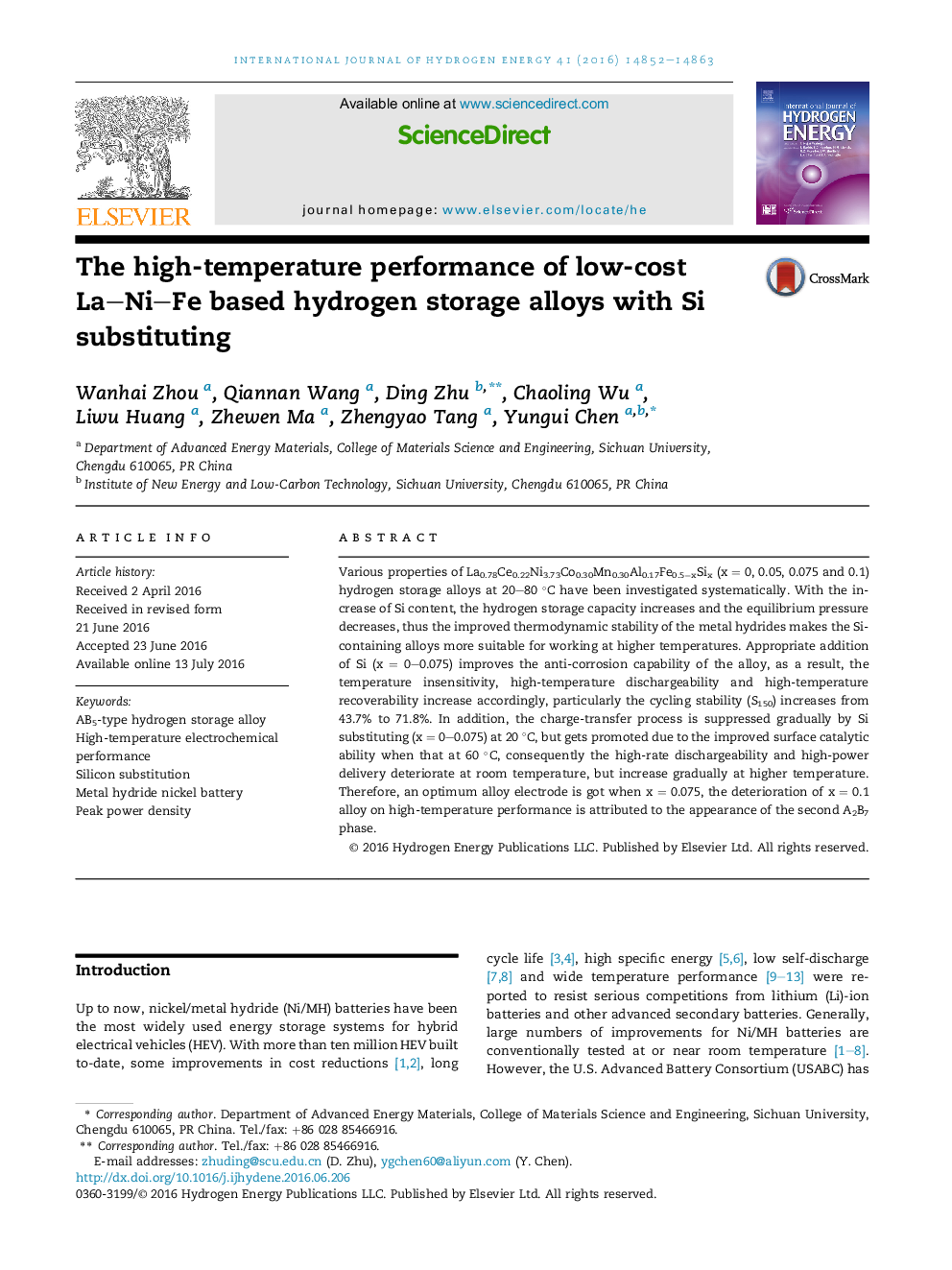| Article ID | Journal | Published Year | Pages | File Type |
|---|---|---|---|---|
| 1269363 | International Journal of Hydrogen Energy | 2016 | 12 Pages |
•Effects of Si on high-temperature performance of AB5-type alloy are firstly studied.•High-Si alloy shows better thermodynamic stability for high-temperature delivery.•Si profitably affects the high-temperature dischargeability, recoverability and cycling stability.•Si-containing alloys show excellent high-rate dischargeability and peak power at 60 °C.•Si promotes anti-corrosion ability and surface catalytic ability at higher temperature.
Various properties of La0.78Ce0.22Ni3.73Co0.30Mn0.30Al0.17Fe0.5−xSix (x = 0, 0.05, 0.075 and 0.1) hydrogen storage alloys at 20–80 °C have been investigated systematically. With the increase of Si content, the hydrogen storage capacity increases and the equilibrium pressure decreases, thus the improved thermodynamic stability of the metal hydrides makes the Si-containing alloys more suitable for working at higher temperatures. Appropriate addition of Si (x = 0–0.075) improves the anti-corrosion capability of the alloy, as a result, the temperature insensitivity, high-temperature dischargeability and high-temperature recoverability increase accordingly, particularly the cycling stability (S150) increases from 43.7% to 71.8%. In addition, the charge-transfer process is suppressed gradually by Si substituting (x = 0–0.075) at 20 °C, but gets promoted due to the improved surface catalytic ability when that at 60 °C, consequently the high-rate dischargeability and high-power delivery deteriorate at room temperature, but increase gradually at higher temperature. Therefore, an optimum alloy electrode is got when x = 0.075, the deterioration of x = 0.1 alloy on high-temperature performance is attributed to the appearance of the second A2B7 phase.
Graphical abstractFigure optionsDownload full-size imageDownload as PowerPoint slide
